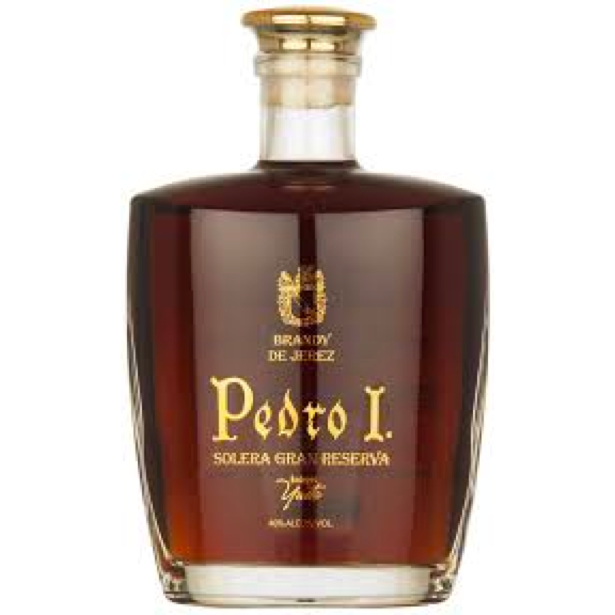Bodegas Yuste Pedro I Solera Gran Reserva Brandy de Jerez Bodegas Yuste
$ 114,99 $ 46,00
Since 1991, Sanlúcar de Barrameda almacenista Francisco (Paco) Yuste has pursued the objective of producing Manzanilla up to its highest historic standards. Upon rescue and restoration of venerable, endangered soleras and bodegas in Sanlúcar’s emblematic Barrio Alto and Barrio Bajo districts, classic Manzanillas and Sherries are produced.
Sanlúcar native Francisco (Paco) Yuste has sold Manzanilla his entire life, building a successful beverage distributorship in the provinces of Cádiz and Córdoba. In 1991 he purchased historic Bodega Santa Ana in Sanlúcar’s Barrio Bajo, including its centenerian solera, and began operation as an almacenista. In 2001 he added Bodega Los Ángeles in the Barrio Alto, restoring it to Manzanilla production and for refreshing his criaderas at Santa Ana. Bodega Miraflores, founded in 1956 by a group of growers in that famous Sanlúcar pago, was acquired in 2010 to serve as production base.
Yuste quality starts in the vineyard with the fabulous 46-hectare Viña La Alamedilla estate in the Jerez pago of Carrascal. Longterm sources in El Puerto de Santa María’s Balbaína and Sanlúcar’s Miraflores contribute in equal parts to combine freshness and minerality with ample body.
New wines arrive to Bodega Miraflores. Just 800 meters from the Guadalquivir estuary, Miraflores offers ideal conditions for sobretablas selection and the first stages of Manzanilla development. After five years, the manzanilla fina passes to Bodega Los Ángeles for aging as Aurora Manzanilla before entering the solera at Bodega Santa Ana in the Barrio Bajo where La Kika (Manzanilla Pasada en Rama, well over 10 years old: “The Pearl of Sanlúcar”) is bottled by hand from selected individual botas.
In 2015 Yuste’s acquisition of the classic Aurora brand provided impetus for export launch. This was followed in 2016 by purchase of Herederos de Argüeso with its famous Manzanilla, San León.
Yuste’s treasures include the 18th Century soleras of the Conde de Aldama, who preserved his prephylloxeric wines by encasing the botas in plaster, preventing their admixture with wines from grafted vines during approximately 50 years.
Quick Shipping and Professional Packaging
We offer a broad range of shipping options thanks to our long-running partnerships with UPS, FedEx and DHL. Our warehouse staff are educated to pack your items exactly as per the specifications that we supply. Your items will undergo a thorough inspection and be securely secured prior to being shipped. We ship to thousands of customers each day from multiple countries. This is a sign of our determination to become the largest online retailer worldwide. Both Europe as well as the USA have distribution and warehouse centers.
Please note that orders with more than one item will be given a processing time according to the specific item.
Prior to shipping, our team will perform an exhaustive inspection of the items you purchased. Today, the majority orders will be shipped within 48 hours. The delivery time is estimated to be between three and seven days.
Returns
The stock is constantly changing and cannot be fully controlled by us due to the involvement of several different parties, such as the factory and our warehouse. The actual stock can change at any moment. Please be aware it's possible your order may become unfulfilled when you have placed the order.
Our policy is valid for a period of 30 days. If it's been more 30 days since you purchased your item and we're unable to offer you a full refund or exchange.
You are able to return an item when it's unopened and is in the same condition when you first received it. It must also be in the original packaging.
Related products
Cabernet Sauvignon
1865 Cabernet Sauvignon Selected Vineyards Maipo Valley 1865
Chardonnay
Pinot Noir
Vodka
Sauvignon Blanc


































